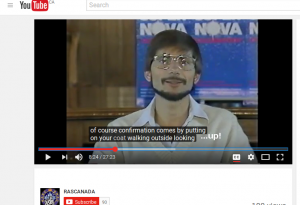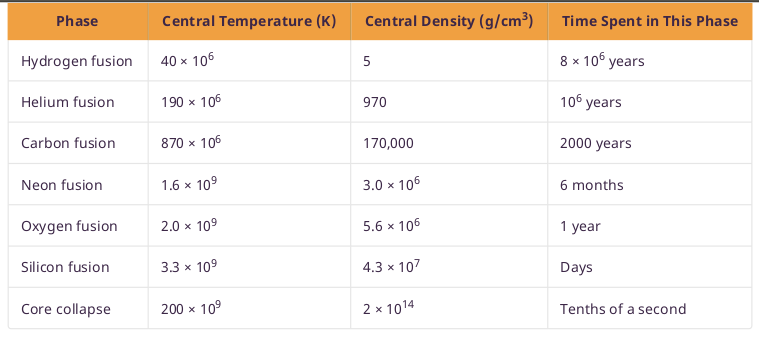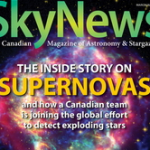by Pat Browne
February 24 2017 marks a special 30th anniversary in Canadian Astronomy: The discovery of Supernova 1987A


The story behind the discovery:
So much of our detailed astronomical understanding of the processes leading up to a supernova explosion comes from an historical observation that happened 30 years ago. That event was the core collapse of a massive star and subsequent explosion of Supernova 1987A. The appearance of this bright new astronomical object (see Figures 1 and 2) was detected by research astronomer Ian Shelton on the early morning of Feb 24 1987…
Before dawn on February 24, Ian Shelton, a Canadian astronomer working at University of Toronto’s Cerro Tololo observatory in Chile, pulled a photographic plate from the developer. Two nights earlier, he had begun a survey of the Large Magellanic Cloud, a small galaxy that is one of the Milky Way’s nearest neighbors in space. Not believing what he was seeing on the photograph , Shelton went outside to look at the Large Magellanic Cloud . . . and saw that a new object had indeed appeared in the sky. He soon realized that he had discovered a supernova, one that could be seen with the unaided eye even though it was about 168,000 light-years away.

See the recorded 1987 interview with Ian Shelton – Video of a special press conference held by the University of Toronto astronomy department.
Because the star blew up in the neighbouring dwarf galaxy, which is 168,000 light years away, the explosion actually occurred 168,000 years ago, and it took that amount of time for the signal to travel at light speed to show up one night in Shelton’s observations. Note also that over the course of 30 years, the signal has attenuated substantially; so that we only see evidence of the neutron star left behind: https://apod.nasa.gov/apod/ap120226.html
Supernova SN 1987A, (‘A’ since it was the first supernova discovered in 1987… and Canadian eh!) gave astronomers their first opportunity to study the explosive death of a relatively nearby star with modern instruments. It was also the first time astronomers had observed a star before it became a supernova. The star that blew up had been included in earlier surveys of the Large Magellanic Cloud, and as a result, we know the star was a blue supergiant just before the explosion.
- Process of Becoming … a supernova:
By combining theory and observations at many different wavelengths, astronomers have reconstructed the staged process of the star that became SN 1987A.
Stellar Evolutionary track of the Star that blew up:
Formed about 10 million years ago, (young in astronomical terms), it originally had a mass of about 20 Suns . For 90% of its life, it lived quietly on the main sequence, converting hydrogen into helium. At this time, its luminosity was about 60,000 times that of the Sun and its spectral type was O .
When the hydrogen in the center of the star was exhausted, the core contracted and ultimately became hot enough to fuse helium. By this time, the star was a red supergiant, emitting about 100,000 times more energy than the Sun.
Helium fusion lasted only about 1 million years. When the helium was exhausted at the center of the star, the
core contracted again, the radius of the surface also decreased, and the star became a blue supergiant with a
luminosity about equal to 100,000 L Sun . This is when the star after brief periods of further fusion reached the iron crisis…
The fusion of silicon into iron turns out to be the last step in the sequence of nonexplosive element production in stellar nuclear fusion. Up to this point, each fusion reaction has produced energy because the nucleus of each fusion product has been a bit more stable than the nuclei that formed it. As in the case of our Sun, the light nuclei ( hydrogen, helium,… up to iron) give up some of their binding energy in the process of fusing into more tightly bound, heavier nuclei. It is this released energy that maintains the outward pressure in the core so that the star does not collapse. But of all the nuclei known, iron is the most tightly bound and thus the most stable.
The collapse: “You might think of the situation like this: all smaller nuclei want to “grow up” to be like iron, and they are willing to pay (produce energy) to move toward that goal. But iron is a mature nucleus with good self-esteem, perfectly content being iron; it requires payment (must absorb energy) to change its stable nuclear structure”. This is the exact opposite of what has happened in each nuclear reaction so far: instead of providing energy to balance the inward pull of gravity, any nuclear reactions involving iron would remove some energy from the core of the star. Unable to generate energy, the star now faces catastrophe – the explosion of the supernova.

As the core was experiencing its last catastrophe, the outer shells of neon, oxygen, carbon,helium, and hydrogen in the star did not yet ‘know’ about the collapse. Information about the physical movement of different layers travels through a star at the speed much much slower than the speed of light, and cannot reach the surface in the few tenths of a second required for the core collapse to occur. Thus, the surface layers of our star hung briefly suspended, much like a cartoon character who dashes off the edge of a cliff and hangs momentarily in space before realizing that he is no longer held up by anything. The collapse of the core continued until the densities rose to several times that of an atomic nucleus. The resistance to further collapse then became so great that the core rebounded. Infalling material ran into the “brick wall” of the rebounding core and was thrown outward with a great shock wave. Neutrinos poured out of the core, helping the shock wave blow the star apart. The shock reached the surface of the star a few hours later, and the star began to brighten into the supernova Ian Shelton observed in 1987
Energy considerations…
Only about 1% of the energy was required to destroy the star, and the rest was carried away by neutrinos. The overall energy in these neutrinos was truly astounding. In the initial second of the event, their total luminosity exceeded the luminosity of all the stars in over a billion galaxies. And the supernova generated this energy in a volume less than 50 kilometers in diameter! Supernovae are one of the most violent events in the universe, and their light show turns out to be almost a negligible indicator for describing how much energy they produce.
Explanation Courtesy – OpenStax Astronomy (this book is available for free) Chapter 23, The Death of Stars
Note – we didn’t discuss the Hubble Heritage mission and the subsequent mysterious rings around SN1987A
See: http://heritage.stsci.edu/1999/04/supplemental.html
Note: The SN was a true ‘guest star’ in the sky which has now faded:

Neutrino Detection – Past, Present and maybe near Future
The neutrinos from SN 1987A were detected by two instruments—almost a full day before Shelton’s observations. (This is because the neutrinos escape from the exploding star more easily than light does, and because you don’t need to wait for a visual observation at night to detect them). Altogether, 19 neutrinos were detected. Since the neutrino detectors were in the Northern Hemisphere and the supernova occurred in the Southern Hemisphere, the detected neutrinos had already passed through Earth and were on their way back out into space when they were captured. Only a few neutrinos were detected because the probability that they will interact with ordinary matter is very,very low. These neutrinos come directly from the heart of the supernova; their energies provided a measure of the temperature of the core as the star was exploding, an estimated 200 billion degrees Kelvin (compare this to the surface temperature of our Sun ~15 million deg Kelvin).
 The 2017 Skynews article: The Inside Story on Supernovas by Ivan Semeniuk describes the current ‘preparedness activities’ of the SNO+ project ( SNO stands for Sudbury Neutrino observatory), and researchers are preparing for the next supernova event:
The 2017 Skynews article: The Inside Story on Supernovas by Ivan Semeniuk describes the current ‘preparedness activities’ of the SNO+ project ( SNO stands for Sudbury Neutrino observatory), and researchers are preparing for the next supernova event:
“Estimates suggest that supernovas should explode in our own galaxy on average every 30 years. This historic discovery 30 years ago, came close to happening in our galaxy… (The Large Magellanic Cloud is so close that it appears almost like a piece of our own Milky Way in southern skies. ) .” http://www.skynews.ca/about-skynews/
Fortunately, in this month, we have the opportunity to step outside and see a Northern Hemisphere Supernova Remnant, the first object on the Messier List, M1, known as the Crab Nebula, https://en.wikipedia.org/wiki/Crab_Nebula. It is located in the constellation Taurus and crosses our meridian, reaching its highest point of its trajectory over our February night skies around 8:00 pm EST.




